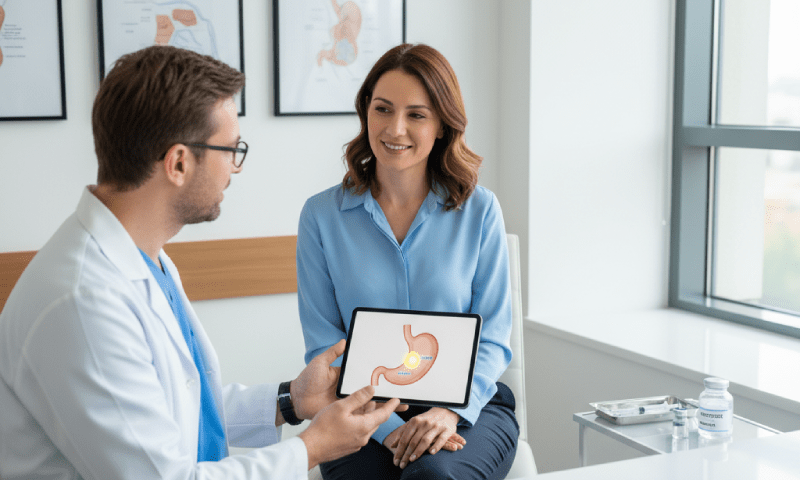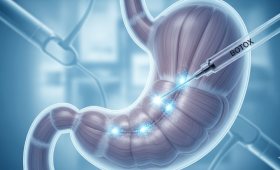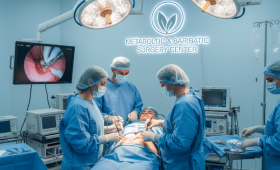Why Is Kusadasi Standing Out For Weight Loss Treatments?
Kusadasi, in addition to the natural beauties offered by the Aegean, is a popular destination for weight loss treatments because it combines high-standard medical services with competitive prices in the field of health tourism. Centers in the region provide services with modern technological infrastructure and internationally recognized expert teams. Patients have the opportunity to spend their recovery periods after treatment in a relaxing holiday environment, comfortably and stress-free. Especially the significant cost advantage it offers compared to European countries makes Kusadasi an appealing option for those seeking high-quality weight loss solutions.
What Treatment Methods Do The Best Weight Loss Centers Offer?
The best weight loss centers offer personalized solutions tailored to each patient’s needs and Body Mass Index (BMI). These solutions generally fall under three main categories: Non-surgical methods (Gastric Balloon, Gastric Botox), Bariatric Surgery (such as Gastric Sleeve), and Medical Follow-up Programs (Dietitian and Lifestyle Coaching). The quality of the centers is measured not only by surgical success but also by the psychological support, detailed nutrition planning, and lifelong post-treatment follow-up services that support the patient’s long-term success. Centers must perform a comprehensive pre-evaluation to determine the most suitable method.
Why Are Weight Loss Treatment Prices More Affordable In Kusadasi Compared To Europe?
The main reasons why the costs of weight loss treatments (gastric balloon, gastric sleeve, etc.) offered in Kusadasi are more affordable compared to European countries are low general operating costs, low personnel expenses, and the attractive foreign exchange rate advantage for international patients. Although the implants, surgical materials, and medications used during the treatment are up to international standards, the lower operational costs in Turkey result in a price advantage. Centers manage to remain competitive in health tourism by passing this cost reduction directly to patients without compromising quality.
What Is A Personalized Weight Loss Program And Why Is It Important?
A personalized weight loss program is a detailed roadmap created from scratch according to the patient’s genetic makeup, eating habits, hormonal status, chronic diseases, and lifestyle, not just their weight. It is important because obesity is not caused by a single factor; therefore, applying the same treatment to everyone does not yield successful results. The best centers work with a multidisciplinary team consisting of a surgeon, dietitian, psychologist, and coordinator, aiming for the patient to start with the most appropriate method (surgical, balloon, botox) and gain sustainable nutrition and exercise habits.
What Are The Key Factors Ensuring The Permanence Of Weight Loss Treatments?
The permanence of weight loss treatments, regardless of the method used, largely depends on the patient’s commitment to behavioral change. Whether surgical or balloon, the treatment is only a “tool.” The key factors ensuring permanence are: Adhering to the rules of small portions, slow eating, and healthy nutrition learned through professional dietitian follow-up, making regular physical activity a lifestyle, and controlling emotional eating habits by receiving psychological support. Centers must offer long-term follow-up services to ensure the continuity of these factors.
What Mechanism Does The Gastric Balloon Use To Achieve Weight Loss?
The gastric balloon is a non-surgical method that achieves weight loss by physically restricting stomach volume. The silicone balloon, placed in the stomach endoscopically, is inflated with sterile liquid, occupying significant space in the stomach. This allows the patient to feel satiated with much less food. The restriction effect created by the balloon in the stomach continues for a period of approximately 6 to 12 months. This period offers a critical “behavioral learning window” for the patient to learn portion control, recognize satiety signals, and adapt to a healthy nutrition regimen.
When Does Gastric Botox Take Effect And How Long Does It Last?
Gastric Botox temporarily slows down stomach contractions by injecting botulinum toxin into certain areas of the stomach endoscopically. The onset of this effect is usually observed within 3 to 7 days after the injection. Botox prolongs the time food stays in the stomach, keeping the patient full for a longer time and reducing their appetite. The effect of Botox generally lasts for 4 to 6 months. During this period, the patient benefits from the reduced appetite and prolonged satiety to easily adhere to their diet. After the effect wears off, the patient’s ability to maintain weight depends entirely on the discipline they have acquired.
What Are The Suitable Candidate Criteria For Non-Surgical Methods?
Non-surgical methods (Gastric Balloon or Gastric Botox) are generally suitable for individuals with a Body Mass Index (BMI) between 27 and 40, who do not want to take surgical risks or do not have a sufficient BMI for surgery. Candidates must not have serious stomach diseases such as stomach ulcers, a large hiatal hernia, or severe reflux. Furthermore, since these methods only support the weight loss process, the patient must have high motivation and the will to strictly adhere to the dietitian’s recommendations. Final suitability is determined through detailed medical history assessment and endoscopy.
How Much Weight Loss Is Expected On Average With The Gastric Balloon?
The average weight loss expected with the gastric balloon depends on the patient’s starting BMI and how strictly they adhere to the diet program. In a successful process, patients are expected to lose 10% to 25% of their total body weight. For example, a patient weighing 110 kg may experience a weight loss between 11 kg and 27.5 kg during the time the balloon remains in the stomach. These results are achieved not by the physical restriction provided by the balloon, but by the patient transitioning to a protein-rich, low-calorie nutrition regimen under the supervision of a dietitian. Discipline is the key to expected results.
How Should Healthy Nutrition Be Maintained After The Balloon Is Removed?
Nutrition after the gastric balloon is removed represents the transition from the weight loss phase to the weight maintenance phase. This process focuses on making the habits of portion control and slow eating, learned while the balloon was in the stomach, permanent. The dietitian gradually increases portions in the first few weeks to prepare the stomach for its normal volume again. The secret to permanent success is to continue a high-protein, high-fiber, and low glycemic index diet, maintain regular physical activity, and manage emotional hunger situations through healthy methods. Long-term dietitian follow-up is critical for this continuity.
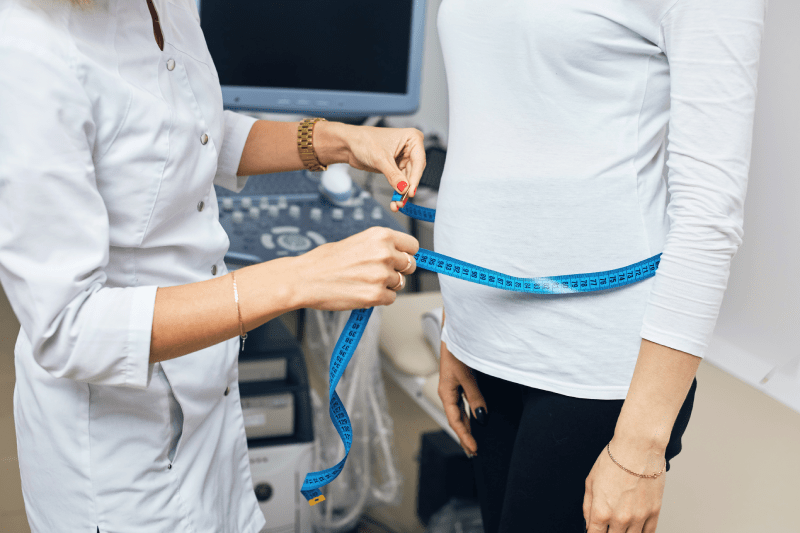
What Is The Main Cost Difference Between Gastric Balloon And Gastric Botox?
The cost difference between the gastric balloon and gastric Botox is primarily due to the material cost and the duration of the procedure. The gastric balloon is an internationally valid, single-use silicone material, and the cost of this balloon is generally higher than the cost of the toxin (medication) used in the Botox application. Furthermore, the balloon usually requires a second endoscopic removal procedure at the end of 6 or 12 months. Gastric Botox is only a single injection procedure and is naturally eliminated from the body, so it does not require a second endoscopic procedure. These factors lead to the balloon price being higher than the Botox price.
Who Is A Suitable Candidate For Gastric Sleeve Surgery?
Gastric sleeve surgery is a surgical solution, generally suitable for individuals with a Body Mass Index (BMI) of 40 and above or those with a BMI between 35-40 who have serious co-morbidities like Type 2 Diabetes, Hypertension, or Sleep Apnea related to obesity. Candidates must also have attempted and failed other weight loss methods (diet, exercise, botox/balloon). It is vital for long-term success that the patient is fully psychologically and physically prepared to make permanent changes to their lifestyle and eating habits before the surgery.
What Is The Working Principle Of Gastric Sleeve Surgery And Is Its Effect Permanent?
Gastric sleeve surgery is based on the principle of reducing the stomach volume by permanently removing approximately 70 to 80 percent of the stomach. This surgical reduction physically enables the patient to feel full with small portions (restriction). Furthermore, since the fundus part of the stomach, where the appetite hormone Ghrelin is largely produced, is removed, the patient’s appetite significantly decreases (hormonal effect). The effect of the surgery is permanent because the stomach is irreversibly reduced; however, for the patient to maintain permanent success, adherence to new nutrition rules for life is essential.
What Is The Compulsory Pre-Operative Diet And Why Is It Necessary?
The pre-operative diet, typically lasting 1-2 weeks before gastric sleeve surgery, is a liquid or low-calorie nutrition program and is mandatory for surgical safety. The main purpose of this diet is to shrink the liver, which is usually enlarged in obese patients. The shrinking of the liver allows the surgical team to safely access the stomach during the operation and facilitates the manipulation of surgical instruments. This significantly reduces the risk of complications during the surgery. It also prepares the patient for the liquid diet they will start after the operation.
How Is Nausea Managed After Gastric Balloon Placement?
Nausea and cramps experienced after gastric balloon placement, especially in the first 3-7 days, are common but can be controlled with medication. The treatment center will prescribe powerful anti-emetic (anti-nausea) and antispasmodic medications to ensure the patient’s comfort. The regular use of these medications is critically important. What the patient must do is drink plenty of water, take the water sip by sip, strictly avoid solid foods in the first few days, and meticulously adhere to the recommended diet rules. These symptoms will naturally disappear as the stomach adapts to the balloon.
How Is The Long-Term Success Of Gastric Sleeve Surgery Ensured?
The long-term success of gastric sleeve surgery depends not only on surgical success but also on the patient’s lifestyle discipline. Critical steps to maintain success are: Continuing sufficient protein intake, regularly using vitamin and mineral supplements recommended by the dietitian for life, not neglecting water consumption, and maintaining a regular exercise routine which should be started at least 6-8 weeks after the surgery. The long-term follow-up and psychological support services offered by the treatment center play a key role in solidifying this discipline.
What Is The Role Of Psychological Support In Weight Loss Treatments?
Psychological support is an element often overlooked in weight loss treatments but plays a vital role in the permanence of success. Behavioral causes such as emotional eating, stress management problems, or eating disorders underlying obesity can continue even after surgery or balloon treatment. Support from a psychologist or life coach helps the patient recognize these triggers, adapt to new eating mechanisms, and cope with the emotional changes brought about by rapid weight loss. Centers offer this support to ensure the patient not only loses weight but also gains a healthy mindset.
What Vitamin Supplements Should Be Used After Gastric Sleeve Surgery?
After gastric sleeve surgery, a deficiency of some vitamins and minerals becomes inevitable because the stomach’s absorption area is reduced. Therefore, patients are required to use regular supplements for life. The most critical supplements are: Vitamin B12 (mostly via injection), Vitamin D, Calcium (for bone health), and Iron (especially for women). The type and dosage of supplements are personalized according to the results of regular blood tests and the dietitian’s recommendation. Neglecting these supplements can lead to serious health problems (anemia, bone loss).
How Many Days Of Stay Are Required In Total For Treatment At Weight Loss Centers?
The duration international patients coming to Kusadasi for weight loss treatment need to allocate varies depending on the method applied. Non-surgical procedures like Gastric Balloon/Botox usually require 3 to 4 days. However, surgical procedures like Gastric Sleeve Surgery require a total stay of 7 to 10 days in Marmaris, as they involve hospitalization (3-4 nights) and close follow-up for possible early complications. Centers include accommodation and transfer services in packages to ensure patients rest comfortably during this period.
Why Is The Leak Test (Sızıntı Testi) Vital In Gastric Sleeve Surgery?
The Leak Test is the most vital safety check performed in the hospital after gastric sleeve surgery. Performed the day after the surgery, this test involves the patient drinking a special contrast agent and having an X-ray taken. The purpose of the test is to definitively check for any leakage along the staple line (incision line) of the stomach. Since leakage is the most serious complication of the surgery, no liquid food is given to the patient, and the decision for discharge is not made until a successful result is obtained from this test. The best centers perform this test meticulously with state-of-the-art imaging devices.
Is Hair Loss Experienced After Surgery And How Is This Prevented?
Temporary hair loss (telogen effluvium) is quite common after gastric sleeve surgery, usually occurring between 3 to 6 months, and this is due to the stress created by rapid weight loss on the body. Since the body redirects energy to vital organs, sufficient nutrients do not reach the hair follicles. To prevent or minimize hair loss, patients must prioritize protein intake for at least 6 months and regularly use supplements like zinc, biotin, and B vitamin complexes recommended by the doctor. The shedding naturally stops once the rate of weight loss slows down.
What Is The Quality Of Implants Or Materials Used In Weight Loss Centers?
Competent weight loss centers in Kusadasi use only FDA or CE approved, high-quality materials to keep the treatment quality at international standards. This is important for the botulinum toxin used for gastric botox being original and reliable brands; and for the silicone material surrounding the balloon being biocompatible and durable for the gastric balloon. In surgical procedures (gastric sleeve), latest technology laparoscopic and stapling devices are preferred to reduce the risk of infection and leaks. The international accreditations of the centers guarantee the quality of the materials used.
What Are The Most Common Post-Operative Complications?
Some complications can rarely occur after gastric sleeve surgery. The most serious but rare risk is a leak (seepage) at the staple line. Other common complications include bleeding (usually stops on its own) seen in the first days after surgery, infection, and the risk of deep vein thrombosis (DVT – blood clot) due to long periods of immobility after surgery. Centers minimize these risks by performing detailed pre-operative tests, encouraging early mobilization, and prescribing blood-thinning medications.
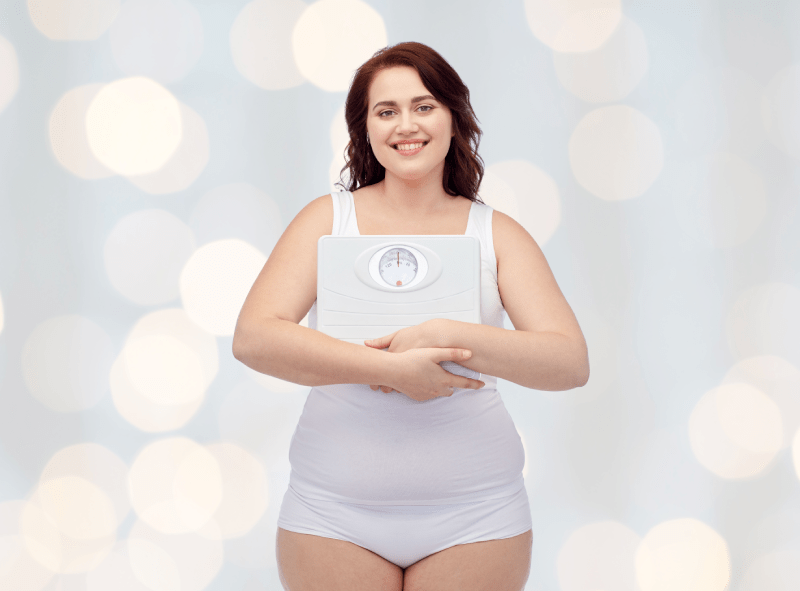
When Can Exercise Be Started After Surgery?
The process of starting an exercise program after gastric sleeve surgery should be gradual for the healing of the stitches and internal wounds. To reduce the risk of DVT, patients should start light walks immediately after the surgery, even while in the hospital. Moderate-intensity walks can usually be started after 3 to 4 weeks. However, starting heavy lifting, core-strengthening exercises, and intense sports that increase intra-abdominal pressure and put strain on the staple lines should generally be postponed for 6 to 8 weeks. Starting heavy sports without the expert team’s approval is risky.
How Visible Are The Scars (Incisions) After Gastric Sleeve Surgery?
Since gastric sleeve surgery is performed using the laparoscopic (keyhole) method today, it does not leave a large surgical scar. The surgeon usually makes 3 to 5 small incisions, each 0.5 to 1.5 cm long, in the abdominal area. These small scars are generally placed in concealed areas for aesthetic concerns. Scars may be red and prominent in the first few months, but with proper wound care, massage, and sun protection, they fade to near skin-color and become barely noticeable within a year. Minimal invasiveness is an important cosmetic advantage for patients.
Is Dietitian Support Included In Treatment Packages And How Long Does It Last?
In the best weight loss centers, dietitian support is considered an integral part of the treatment and is usually included in the treatment packages. This support starts with the pre-treatment preparation diet. In Balloon/Botox treatments, it continues throughout the time the balloon/botox is in the stomach (4-12 months). In gastric sleeve surgeries, this follow-up period is usually planned for at least one year. Follow-up is maintained through regular tele-consultations even after the patient returns to their home country. This long-term follow-up enables the patient to adapt to the new lifestyle and manage the risk of weight regain.
When Can I Return To Work After Gastric Balloon Or Botox Treatment?
Returning to work immediately after non-surgical gastric balloon or botox procedures is generally not recommended. At least 2 to 3 days of rest is required for the patient to fully recover from the effects of sedation and for the stomach to pass the adaptation process to the balloon/botox. These first days are when nausea or cramps are most intense. After completing this initial adaptation process, the patient can return to non-strenuous, desk jobs starting from the 3rd or 4th day. It is more appropriate to wait about a week for jobs requiring heavy physical activity.
What Medical Tests Are Required Before Weight Loss Treatments?
A series of medical tests are requested before all weight loss treatments to evaluate the patient’s general health status and suitability for the operation/procedure. These generally include: Comprehensive Blood Tests (full blood count, liver/kidney functions, vitamin levels), infectious disease screenings (Hepatitis B, C), Cardiology Examination (ECG, stress test if necessary), and Pulmonary Function Tests. Diagnostic endoscopy is mandatory for non-surgical methods. Psychological evaluation is also requested in addition to all these tests before gastric sleeve surgery.
Is There A Translation Service For Patients Coming From Abroad?
Yes, international service providers at weight loss centers in Kusadasi offer professional translation services as standard to ensure patients from abroad do not experience communication problems. Translators actively participate in all consultations with the surgeon, dietitian, and coordinator from the initial consultation stage to the discharge moment. This service ensures the patient fully and accurately understands medical instructions, risks, and care rules in their native language, supporting a safe and comfortable treatment process.
How Does Smoking And Alcohol Consumption Affect Treatment Success?
Smoking and alcohol consumption extremely negatively affect the success and safety of all weight loss treatments. Smoking both slows down wound healing and increases the risk of leaks in surgical procedures (gastric sleeve). In Balloon/Botox treatments, it increases stomach acid, aggravating the nausea and irritation of the stomach. Alcohol is risky due to its high-calorie content and its interaction with medications. Therefore, it is a vital necessity for patients to completely quit smoking and alcohol for at least 4 weeks before and 6 months after all treatments.
When Can I Travel By Plane After Gastric Sleeve Surgery?
The decision to travel by plane after gastric sleeve surgery must be made carefully due to the severity of the operation. Due to the risk of Deep Vein Thrombosis (DVT – blood clot), which is one of the biggest risks in the first 7 to 10 days after surgery, patients are generally required to spend this time in Marmaris. To reduce the DVT risk during travel, patients should wear compression stockings, walk frequently, and drink plenty of fluids. Safe travel can be carried out after at least 7 to 10 days, with the surgeon’s approval.
How Is The Risk Of DVT (Deep Vein Thrombosis) Prevented?
Deep Vein Thrombosis (DVT) is the risk of clot formation in the veins due to prolonged immobility and is a significant risk in bariatric surgery. To prevent this risk, centers apply the following: Blood-thinning injections (heparin) are prescribed before and after the surgery, the patient is encouraged to walk early and regularly during the hospital stay, and special pneumatic compression devices are applied to the patient’s legs. Furthermore, patients are strongly advised to drink plenty of water and move during travel.
Are Accommodation And Transfer Services Included In The Treatment Packages?
International weight loss centers in Kusadasi generally offer comprehensive “all-inclusive” treatment packages for the comfort of foreign patients. These packages include, in addition to surgical/procedure costs, quality hotel accommodation for the patient’s stay (3-10 days) and all VIP transfers between the airport, hotel, and clinic. These services are provided to ensure patients can focus entirely on their treatment and recovery without dealing with logistics.
What Are The Aesthetic Outcomes Of Gastric Sleeve Surgery?
The aesthetic outcomes of gastric sleeve surgery are the significant improvements seen in the patient’s body contour and proportions. Patients achieve a more slender and proportionate body shape with rapid weight loss. However, skin sagging (excess skin) may occur in the arms, abdomen, and leg areas after major weight loss. For the final aesthetic appearance, body contouring surgery (lifting operations) may be necessary after weight stabilization (at least 6-12 months later). The surgery provides an aesthetic starting point.
At What Stage Is The Gastric Balloon Removed Endoscopically?
The gastric balloon is removed endoscopically, generally after 6 to 12 months, unless there is a maximum retention period violation or any complication (e.g., severe intolerance). The removal procedure, similar to the placement, is performed under light sedation for patient comfort. With the aid of an endoscope, the liquid in the balloon is aspirated and drained, and then the deflated balloon is gently removed through the mouth. The procedure takes approximately 20-30 minutes, and the patient is discharged after a short rest.
Is Fasting Compulsory Before Weight Loss Treatments?
Yes, fasting (abstaining from food) for a certain period is mandatory before all weight loss procedures (Gastric Balloon, Gastric Botox, Gastric Sleeve Surgery) that require sedation or general anesthesia. This is vital for anesthesia safety. Patients are generally asked to stop solid food intake at least 8 hours, and liquid intake (including water) at least 4 hours before the operation. Non-compliance with this rule increases the risk of aspiration (stomach contents entering the lungs) during anesthesia.

What Kind Of Transition Process Does The Post-Surgical Nutrition Plan Involve?
The post-surgical nutrition plan involves a gradual transition process lasting 4 to 6 weeks to acclimate the stomach to its new size and ensure healthy healing. This process includes:
- First week: Clear liquids.
- Second week: Full liquids (protein-supplemented).
- Third week: Pureed foods (blended).
- After the fourth week: Transition to soft solid foods and then normal solid foods. The most important rule during this process is to eat small portions, chew food very well, and focus on high protein intake.
How Does The Quality Of Life Improve After Weight Loss Treatments?
Weight loss treatments fundamentally increase patients’ quality of life, not just their aesthetic appearance. Thanks to weight loss, chronic diseases related to obesity (diabetes, hypertension, sleep apnea) improve or go into remission. Patients’ physical mobility, energy levels, and sleep quality significantly improve. Their participation in social life increases, their self-confidence rises, and their general psychological health is positively affected. These treatments open the door to a longer, healthier, and more active life for patients.
What Should Be Done If I Become Pregnant While Using The Gastric Balloon?
Becoming pregnant while the gastric balloon is in place carries a serious risk for both mother and baby. The restrictive effect of the balloon can prevent the adequate nutrient and vitamin intake necessary for the healthy development of the fetus. Therefore, if pregnancy is suspected, a specialist must be consulted immediately, and the balloon usually needs to be removed endoscopically as soon as possible. Patients should not plan pregnancy for at least 1 year before starting balloon treatment and must use effective contraception methods.
What Treatments Are Offered At Weight Loss Centers In Addition To Surgery?
Comprehensive weight loss centers offer supportive treatments in addition to the main procedures to enhance the patients’ quality of life after weight loss. The most common ones include: Bariatric Dietitian Follow-up, Psychological/Behavioral Counseling, Vitamin and Mineral Supplement Programs, Supportive Treatments to Prevent Hair Loss, and guidance or planning services for Body Contouring Surgery (lifting operations) in case of skin sagging. This holistic approach supports the patient’s transition to a healthy life, not just their weight loss.
When Can I Start Driving A Car After Surgery?
Patients are advised to wait at least 1 week before starting to drive a car after gastric sleeve surgery. Strong painkillers used after the surgery can slow down reflexes. Additionally, the stitches in the abdominal area can be strained during movements like sudden braking, causing pain. It is important that the patient has stopped using painkillers and can perform sudden movements without pain before starting to drive.
What Is The Importance Of Vitamin Supplements Provided By A Dietitian?
Vitamin supplements provided by a dietitian are vital, especially after gastric sleeve surgery. The reduction of stomach volume and the change in the absorption path prevent the body from adequately absorbing essential nutrients like B12, D, Calcium, and Iron. These deficiencies can lead to serious health problems like anemia, chronic fatigue, nerve damage, and bone loss. The dietitian prescribes personalized supplements based on blood test results to address these deficiencies. The regular and lifelong use of these supplements is mandatory for sustaining surgical success.
In Which Cases Might Gastric Bypass Be Recommended Instead Of Gastric Sleeve Surgery?
In some cases, gastric sleeve surgery may not be suitable for the patient, or a more complex surgery like Gastric Bypass may be recommended instead. Bypass offers a more effective solution, especially for patients with uncontrolled severe Type 2 Diabetes or high-grade reflux (GERD). While the sleeve has the potential to worsen reflux, bypass has a higher success rate in controlling diabetes due to its metabolic effects. The surgeon must evaluate the patient’s co-morbidities to decide on the most appropriate surgical method.
What International Quality Certificates Do Treatment Centers Possess?
The best weight loss centers in Kusadasi hold high-quality certificates to earn the trust of international patients. These certificates generally include the approval of the Turkish Ministry of Health, general quality standards like ISO 9001 (Quality Management System), and other accreditations accepted in health tourism. These certifications show that the clinics meet international standards regarding hygiene, patient safety, technological infrastructure, and personnel competence, serving as an important reference point for patient selection.
How Is Skin Sagging Managed After Surgery?
After rapid and intensive weight loss, sagging (excess skin) can occur as the skin loses elasticity, especially in the abdomen, arms, legs, and breast areas. The management of this situation is twofold: First, regular exercise to maintain muscle mass and plenty of hydration to support skin recovery during the weight loss process. The second and permanent solution is the body lifting surgeries (Abdominoplasty, Arm Lift, Breast Lift) performed by Plastic Surgeons after the target weight is reached and stabilized for at least 6 months, to remove the excess skin.
When Is The Transition To Solid Food Made After Gastric Balloon/Botox?
The transition to solid food after gastric balloon or botox must be quite gradual for the stomach to adapt. Only liquid foods are consumed for the first 3-4 days after the procedure. Then, starting from the 4th day, there is a transition to pureed, soft, protein-rich foods for about 1 week. The transition to solid foods usually begins at least 10-14 days after the procedure. Slowing this transition is critically important to prevent stomach discomfort, nausea, and vomiting.

How Is The Potential Risk Of Weight Regain Reduced In Weight Loss Treatments?
The risk of weight regain exists in all weight loss treatments, surgical or non-surgical, and the reduction of this risk depends entirely on behavioral discipline. The most effective way to reduce the risk is to benefit from the long-term dietitian and psychological follow-up services offered by the centers. The patient must avoid high-calorie, liquid, or soft foods (e.g., ice cream, sugary drinks) and make physical activity a part of their life. It should be remembered that the treatment is a tool; success is a result of lifelong healthy choices.
How Should The Best Weight Loss Centers Be Chosen?
When choosing the best weight loss center, experience, hygiene standard, and multidisciplinary team structure should be considered, not just the price. Points to consider when selecting: The hospital’s full-fledged and international accreditation, the track record of the surgical team and gastroenterologist’s experience, whether comprehensive long-term follow-up service is offered, and the review of international patient references. Getting detailed information about the transparent pricing policy and package contents will help you make the right decision.
What Is The Age Limit And BMI Requirement For Weight Loss Treatments?
The lower age limit for weight loss treatments is generally 18 years old, and the decision for bariatric surgery is made more meticulously. The upper age limit is not definitive and depends on the patient’s general health condition being suitable for anesthesia and the recovery process. The BMI requirement varies by method: BMI 27-40 for Gastric Balloon/Botox; and BMI over 40 or BMI 35-40 with co-morbidities for Gastric Sleeve Surgery.
Is Nausea And Vomiting Common After Gastric Sleeve Surgery?
Nausea and vomiting are common after gastric sleeve surgery, especially during the first liquid diet phase. This is generally caused by the patient eating too fast, taking too large sips, or consuming too much liquid for the new size of the stomach. Nausea is controlled with medication. It is vitally important for the patient to pay close attention to their eating speed, consuming food sip by sip and very slowly to prevent vomiting. This condition decreases as the stomach adapts after the first few weeks.
What Is The Difference Between Pre-Evaluation And Final Consultation?
Pre-evaluation is the determination of the suitable treatment method and the creation of an estimated plan based on the patient’s medical history and photos sent online while they are in their home country. Final Consultation is the official meeting held after the patient arrives in Kusadasi, where the surgeon reviews all blood test and endoscopy/radiography results face-to-face, gives final approval for the surgery or procedure, and all measurements are taken. Pre-evaluation is the first step of planning, and the final consultation is the final step of safety and definitive planning.
How Is Long-Term Follow-Up Managed After Weight Loss Treatment?
Long-term follow-up after weight loss treatment is vital for the patient to maintain their weight loss. Patients remain in constant communication with their clinics even after leaving Kusadasi. Follow-up is conducted more frequently (monthly) during the first year, through tele-consultations, communication via email or application, sending blood test results, and dietitian meetings. This regular communication is necessary for the early diagnosis of possible vitamin deficiencies and the risk of weight regain.
This detailed guide of 35 questions and answers provides a comprehensive overview of the best weight loss centers and treatment processes in Kusadasi. To make the right start on your weight loss journey with high safety standards, an expert team, and in a comfortable tourism environment, we strongly recommend contacting Cure Holiday, who are specialists in health tourism, to manage all your treatment and travel organization. They will make this complex process transparent, safe, and stress-free for you.
